Observations of soybean rust in southern states indicate that the pathogen (Phakopsora pachyrhizi) is beginning to move northward towards Illinois. Based on current movement, soybean rust likely will arrive in Illinois again this year, but it may not be in the state early enough to cause any yield losses. Late-planted fields would be the most at risk to losses caused by soybean rust. In general, once soybean plants reach the R6 stage (full seed stage), yield loss is unlikely to occur with any infections by the soybean rust pathogen. Many soybean fields in the state are now at the R5 stage (beginning seed stage). If spores of the soybean rust pathogen arrive in Illinois, favorable conditions must occur for infection and disease development to occur. Conditions that are favorable for soybean rust include moderate temperatures, frequent rainfall, and cloudy skies.
Soybean rust observations in North America can be viewed at the IPM PIPE website. Although soybean rust sentinel plots are no longer maintained in Illinois (due to lack of funding), monitoring for soybean rust in Illinois is still occurring in targeted risk areas in the state. Any soybean leaves that are suspicious for soybean rust should be sent to the University of Illinois Plant Clinic.
Other diseases that can be confused with soybean rust, such as bacterial pustule and Septoria brown spot, have been observed in Illinois this year. Of these two diseases, bacterial pustule may be the most easily confused with rust. One major difference between symptoms caused by bacterial pustule and soybean rust is that the pustules on the leaves will occur on both the upper- and underside of the leaf with bacterial pustule, but only on the underside of the leaf with soybean rust. Continue to monitor the IPM PIPE website and the Bulletin for additional updates on soybean rust.
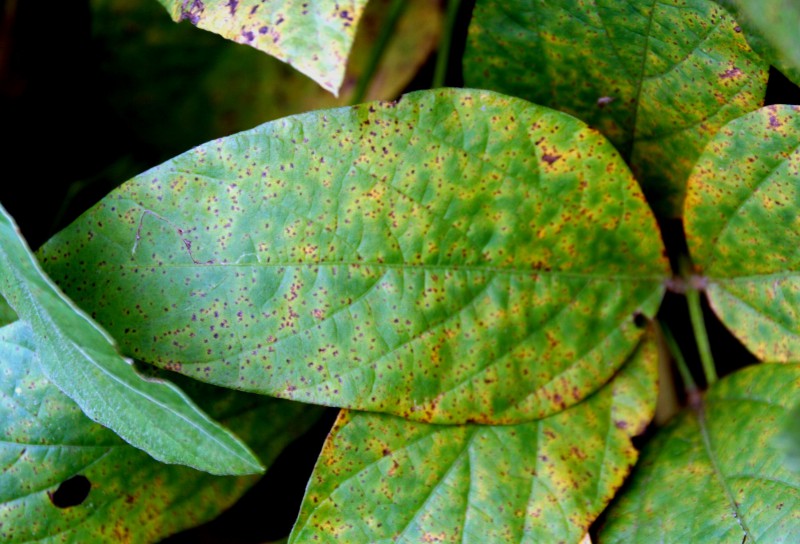 Symptoms of soybean rust on soybean leaflets (photo courtesy D. Mueller, Iowa State University). |
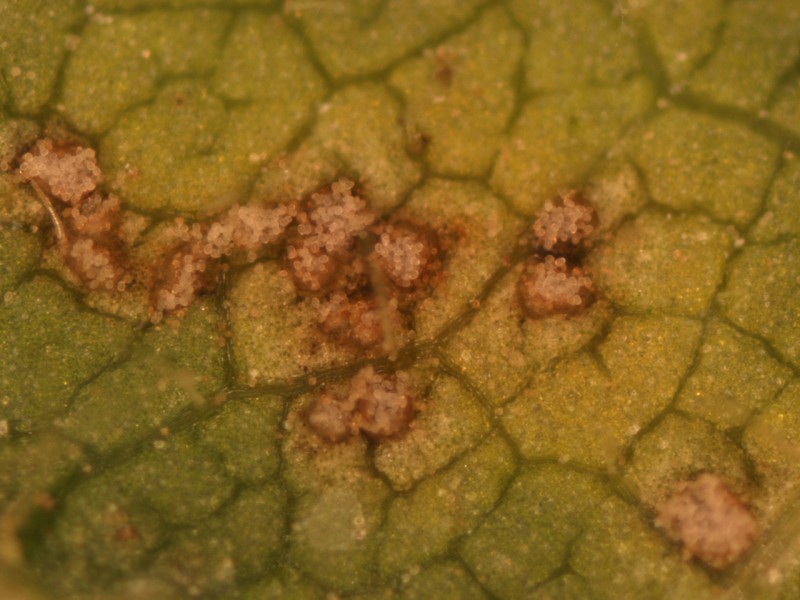 Soybean rust pustules filled with spores on the underside of a soybean leaflet (magnified) (photo courtesy D. Pedersen, Univ. IL). |
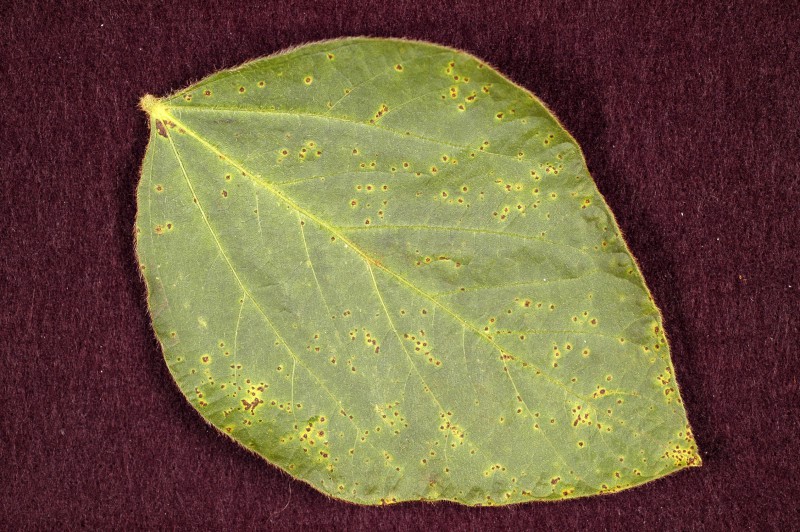 Symptoms of bacterial pustule on a soybean leaflet (photo courtesy D. Pedersen, Univ. IL). |
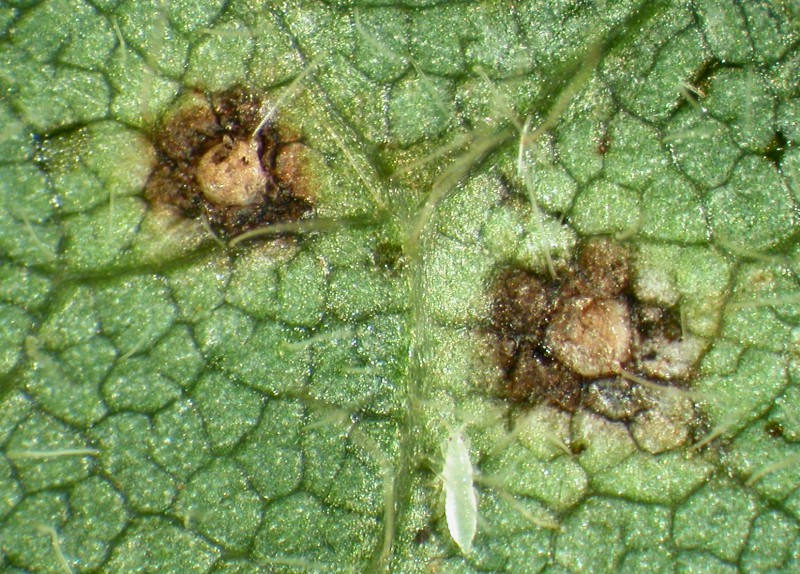 Bacterial pustules that can be found on either the upper- or undersides of soybean leaflets (magnified) (photo courtesy D. Pedersen, Univ. IL). |
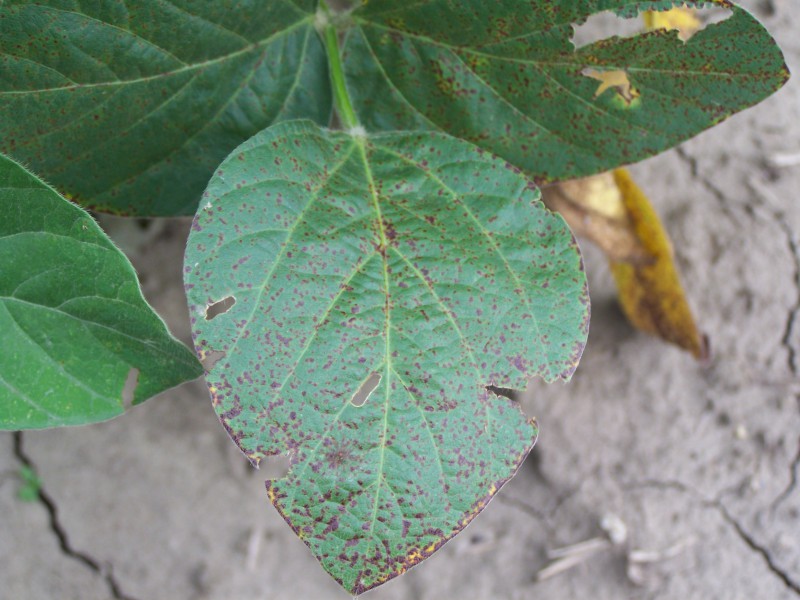 Symptoms of Septoria brown spot on a soybean leaflet (photo by C. Bradley). |






Post a comment
Report Abusive Comment